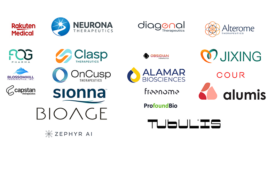
[Image courtesy of Joe Ravi via Wikimedia Commons]
The court will consider how much a patent must disclose to comply with enablement requirements.
In February 2021, the Federal Circuit ruled that two Amgen patents (8,829,165 and 8,859,741) for the cholesterol drug Repatha (evolocumab) do not meet enablement requirements because the patent claims require “undue experimentation.”
Now, the Supreme Court will consider whether to uphold the ruling, overrule it or send it back down to the lower court.
Suppose the Supreme Court’s justices choose to uphold the Federal Circuit’s ruling in Amgen v. Sanofi. The consequences could be devastating to the molecular biology and biotechnology industry, said Patrice Jean, chair of Hughes Hubbard & Reed’s life sciences practice. Her law firm is not involved in the case.
Such a ruling could weaken the intellectual property protections for many biotech inventions. “Many of those inventions are protected by claims like this, these functional genus claims,” Jean said.
The Amgen patents cover a functional genus of monoclonal antibodies that block the PCSK9 enzyme. The enzyme binds to low-density lipoprotein (LDL) receptors to cause them to degrade.
When developing evolocumab, Amgen screened more than 3,000 human monoclonal antibodies. Sanofi’s and Regeneron’s research on PCSK9 resulted in the development of Praluent (alirocumab).
FDA approved both evolocumab and alirocumab in 2015.
A year earlier, Amgen filed a lawsuit against Sanofi and Regeneron, arguing that the two companies infringed on its PCSK9 intellectual property related to evolocumab when they sought approval for alirocumab.
The Federal Circuit concluded that the evolocumab patents were based on the function of antibodies that bind to a given therapeutic target rather than their structure.

Patrice Jean
U.S. Solicitor General Elizabeth Prelogar recommended the Supreme Court decline to hear the case. Prelogar reasoned that when “a patent exclaims an entire genus based on its function, the patent must enable the entire genus.”
A Supreme Court upholding of the ruling could be ‘devastating’
If the Supreme Court were to ultimately agree, it would upend decades of precedent and thus create unpredictability, Jean said. In addition, such a ruling could make it more difficult for biotech companies to protect their inventions.
Such a ruling could inspire biosimilar and generic companies to attack similar biotech patents. Such litigation would be expensive for patent holders but could lead them to lose core patents, Jean said.
“Other companies could come in and make tiny alterations to your technology because you didn’t claim the exact monoclonal antibody that ultimately ended up on the market,” she said. “That can be devastating to your research and development strategy.”
A need to rethink IP strategy?
If the Supreme Court sides with the Federal Circuit in Amgen v. Sanofi, biotech inventors may respond to such a ruling by rethinking their patent strategy.
Many biotech companies would traditionally begin by filing a broad patent application. “If you’re in a lab, and you find a broad category of things that you think can resolve a problem, then that’s what you’re going to claim,” Jean said.
As research progresses and biotech companies identify candidates with clinical promise, they tend to file narrower patent applications. “Ultimately, you get something as narrow as your compound of interest that’s going to go through a clinical trial,” Jean said. “And if the first one doesn’t work, you go to something else. So the whole process of science is just starting big and then narrowing and finding something that will ultimately be on the market that will save lives.”
If forced to retool their patent strategy, biotechs could respond by filing patent claims covering smaller groups of inventions. Such a move could result in an increase in overall patent applications. “It could create a real bottleneck through the patent office because now you’ve got a gazillion more patents because companies are uncertain whether their foundational patents are enough to protect them.”
Filed Under: Drug Discovery and Development, Women in Pharma and Biotech





Tell Us What You Think!
You must be logged in to post a comment.